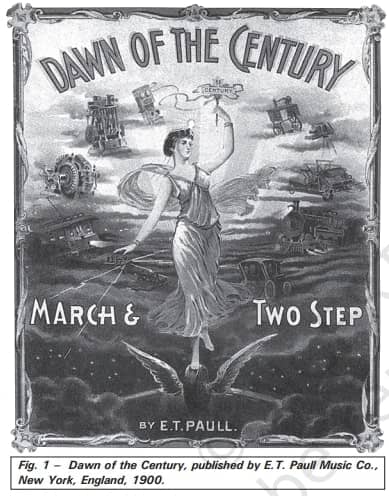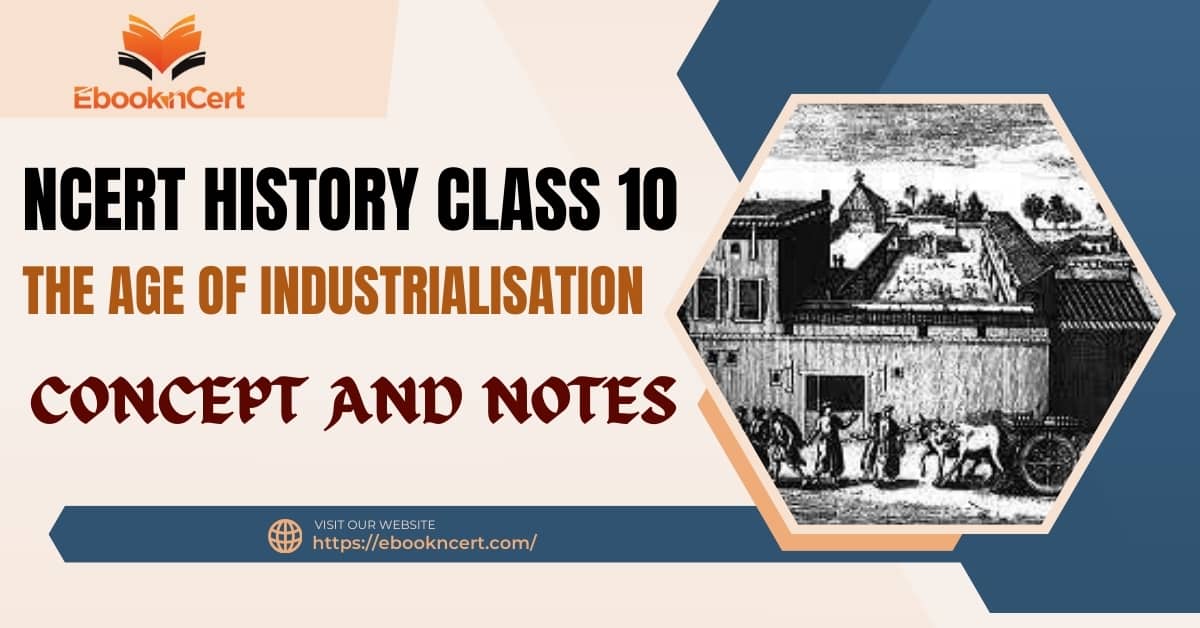NCERT History Class 10 | The Age of Industrialisation – Concept and Notes
Topic & sub-topics covered: Introduction to The Age of Industrialisation: The Age of Industrialisation (All single detail notes are exam-oriented).
We have discussed in-depth and exam-oriented pointers that can be asked in the board exam of class 10th about “Introduction to The Age of Industrialisation” which is taken from the NCERT History book for class 10th chapter no. 4 “The Age of Industrialisation“.
Download NCERT History Chapter 4 Class 10th Notes PDF for The Age of Industrialisation
If you are in class 10th and looking for free NCERT History chapter 4 notes of the chapter The Age of Industrialisation class 10 that cover concepts, then you can download the free class 10th History chapter 4 notes “The Age of Industrialisation”. You should download this free PDF for future test or exam preparations.
Introduction to The Age of Industrialisation

1. Illustrations of Progress in the Early 20th Century:
- In 1900, E.T. Paull produced a music book with an illustration titled ‘Dawn of the Century.’
- The cover featured a goddess-like figure, the angel of progress, symbolizing the new century, perched on a winged wheel, indicating the passage of time.
- Progress signs in the illustration included a railway, camera, machines, printing press, and factory.
2. Glorification of Machines and Technology:
- A trade magazine illustration from over a century ago depicted two magicians, contrasting Aladdin from the Orient (representing the East and the past) and the modern mechanic (representing the West and modernity).
- The modern mechanic was portrayed as weaving new magic through tools and constructing bridges, ships, towers, and high-rise buildings.
3. Triumphant Account of the Modern World:
- The images presented a triumphant narrative of the modern world associated with rapid technological change, machines, factories, railways, and steamships.
- The history of industrialization was simplified as a story of development, presenting the modern age as a time of remarkable technological progress.
4. Popular Imagination and Perceptions of Progress:
- These images and associations have become ingrained in the popular imagination, shaping perceptions of industrialization as a time of progress and modernity.
- The spread of railways, factories, and the construction of high-rise structures are often seen as indicators of societal development.
5. Critical Questions about Industrialization:
- Reflecting on these images, one must consider if industrialization is always based on rapid technological development.
- The glorification of continuous mechanization and its implications for society’s well-being need careful examination.
- Understanding the multifaceted impact of industrialization on people’s lives requires exploring its historical context.
Next & Previous Topics of NCERT/CBSE History Class 10 Chapter 4: The Age of Industrialisation
FAQ
Q1. What is the significance of the age of industrialisation in history?
Answer: The Age of Industrialisation, which spanned the 18th and 19th centuries, was a transformative period in human history that marked a turning point in technological advancements, economic growth, and social and political changes.
Some of the key aspects of this era include:
- The emergence of factories: The establishment of factories led to the concentration of industry in large establishments, replacing hand tools with power-driven machines.
- Power of steam and hand labour: The use of steam power and hand labour in factories revolutionized production processes and increased efficiency.
- Workers’ lives: The Age of Industrialisation brought about significant changes in workers’ lives, including the rise of a new industrial labour force.
- Colonial industrial development: The era saw the industrialization of colonies, with countries like India experiencing the establishment of cotton mills and other industries.
- Goods market: The growth of factories and industries led to the expansion of the goods market, enabling the production and trade of various products on a larger scale.
Understanding the Age of Industrialisation is crucial as it paved the way for technological advancements, transformed economies, and gave rise to social and political changes that shaped the modern world. This period laid the foundation for the Information Age and continues to influence the global economy and society today.
Q2. How did the age of industrialisation impact the environment?
Answer: The Age of Industrialisation had a significant impact on the environment, leading to widespread pollution and exploitation of natural resources.
Some of the key environmental impacts include:
- Pollution: Rapid industrialization led to severe air and water pollution, with industrial city air being polluted with thick smog and waterways heavily contaminated with oil and debris.
- Depletion of Natural Resources: The increased demand for raw materials and energy during industrialization led to the depletion of natural resources, including forests, minerals, and fossil fuels.
- Greenhouse Gas Emissions: The Industrial Revolution significantly increased greenhouse gas emissions, contributing to global warming and climate change.
- Waste Generation: The rise of industrial production resulted in excess waste, including non-biodegradable materials such as plastics, leading to environmental degradation and resource depletion.
- Impact on Biodiversity: The Industrial Revolution’s environmental impact posed a threat to fragile ecosystems and the survival of many species of wildlife, leading to a decline in biodiversity.
In summary, the Age of Industrialisation had a detrimental impact on the environment, causing long-term damage through pollution, resource depletion, and biodiversity loss.

